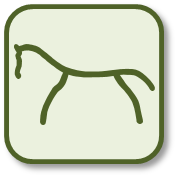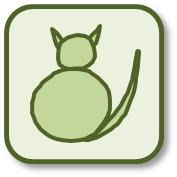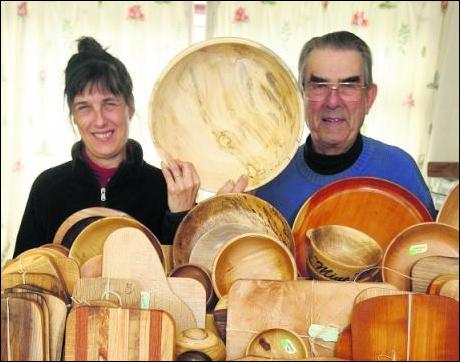
Odds 'n' Ends...
This is where we display anything that does not really fit
anywhere else on our website - we hope you will find
something useful or interesting here...
List of
Articles:
Care of Polished Woodware
Timber Sources
Provenance and Marking of Our Work
Local Newspaper Article featuring The
Treen Workshop
What is a Teleidoscope?
The following article may be downloaded as a PDF file - click HERE
Care of
Polished Woodware
Almost all of the timber we use has been sourced in the West
Country, largely from wind-blown timber from woods, fields
and gardens. This is often regarded as firewood - but we
recycle it into something quite unique. Some pieces will
show signs of past wood borer activity - especially those
with unusual grain patterns. Do not be concerned by this.
Any such pieces will have been microwaved during the
manufacturing process to a high temperature to ensure the
'demise' of any 'squatters'!
Functional Items
Boards and kitchen items are treated with food safe
oil or rape seed oil; bowls are treated with a sealant and
melamine or polyurethane finish. Kitchen items will come
into contact with water and liquids such as detergents. Hand
wash with washing up liquid and dry; wipe occasionally with
rape seed oil. Never wash in a dishwasher. Dairy products,
fruit and vegetables may produce some staining over time.
If a cutting board is used to cut meat, it should never be
used for any other food stuff. Spray with an anti-bacterial
spray and then wash in cold water and washing up liquid; use
of hot water will encourage the deposit of unwanted proteins
onto the wood.
Platters may be used as mats (trivet) under hot cooking
vessels which have come straight from the oven. If the
vessel is coming from an oven that is above 220°, rest the
vessel for a minute or two on the sink draining board or
similar, before putting on to the platter.
Decorative Items
Rub occasionally with a bees wax polish, such as
Briwax, followed by a brisk rub with a soft cloth or duster
to keep them shining. We do not recommend the use of a
silicon spray polish.
In general, our pieces are intended for use - not just for
show. In the very nature of their purpose they will get cut,
scratched and bumped. That is their fate and they should
bear their scars proudly! However, if you really cannot bear
the sight of such a damaged item - they may be returned for
resurfacing/ re-polishing for a small fee.
We use a large variety of woods
almost all English, mostly from the West Country or local to
our workshop near Brecon, Powys, mid Wales. This
is mainly sourced from fallen, wind-blow, or as the result
of tree surgeons efforts - we will also use wood destined
for the tip that has been rescued to make something useful
or beautiful.
We use ornamental woods such as Acacia, Lilac, Laburnum,
Magnolia and Yew. Fruit woods such as Apple, Cider
Apple, Bay, Cherry, Damson, Greengage, Pear and Walnut.
Also, indigenous field and forest woods including Ash,
Beech, Sweet Chestnut, Elm, Green and Brown Oak, Sycamore,
May (Hawthorn) and Maple.
These woods result in some wonderfully featured and unusual
pieces. We use wood with knots and knobbles to create
interesting objects. A lot of our material is spalted
(random patterned black or dark brown lines on a light wood,
or sometimes pale cream lines on a darker piece of wood),
burred (groups of little knots that have sprouted out of the
side of a large tree, usually creating a large blister or
lump), or randomly patterned with wild grain from knots or
blemishes. Walnut and Yew will often show timber that
has both dark and light wood in the piece.
No two pieces are ever exactly the same even when trying to
make a set. This is because they are hand-made without
jigs and also because of the grain of the wood.
We hardly ever source wood from a regular timber merchant,
even the ones that specialise in rare pieces for wood
turners. Although, for that 'special commission'
(where necessary) we will do our utmost to find the 'exact
wood' for the piece. We will often use pieces that others would consign
to the wood-burner because of soft wood, cracks or other
blemishes and we will use glue where appropriate to save a
piece.
Provenance and Marking of Our Work
Every piece is marked with the
maker's details, unique identifier, date, variety of wood,
origin of wood and the type of finish (wherever possible!).
Maker's
Details: 'ET' for Ellie and logo:

'IMW' for Ian and logo:

Unique Identifier/ Date: each piece is given a
sequential unique number and the year it was made.
For example: ET123/ 2015
(made by Ellie, ID No. 123, in 2015)
Sets of like items are given the same number with an alpha
suffix e.g. IMW123a/ 2012
Variety and
Origin of the Wood: is marked on each piece. e.g.
Pear from Laburnum Cottage, West
Tockenham, near Royal Wootton Bassett, Wiltshire.
We collect most pieces from their place of origin.
This enables us to give exact details of the wood.
Multi-wood boards will show all of the woods used in the
board at one end of the board. They will not identify
where each wood came from.
Type of
Finish: a set of code letters are used to
indicate the finish or finishes applied to the piece.
See legend below:
a
Acrylic finish
c Cellulose
sealer
c
Stabilizer, dilute cellulose sealer
cf Cellulose fill
sealer/ sawdust mix
d
Danish oil
de Exterior Danish
oil
df Deep frozen
against wood borers
e Epoxy
resin/ sawdust mix
f Food safe
oil by Chestnut
fg Fiddles
gel fill/ sawdust mix
k Kiln dried
m Short microwave
against wood borers
m10 Microwave to dry e.g. 10%
moisture removed
m Melamine
lacquer finish usually 2 coats
2ppc Rustins 2 part plastic coating
p
Polyurethane silk varnish, usually 2 coats
r
Rapeseed oil
s Shellac
sealer (French polish)
sg Super glue
t Chemical treatment against wood borers
y Yacht
varnish usually 2 coats
w Beeswax
wo Beeswax/ food safe Oil mix
Working with Wood Alongside The Treen Workshop in Brecon
Swindon Advertiser
columnist Barrie Hudson takes a turn at
woodwork.
Published: Wednesday 23rd January 2013 - By Barrie Hudson
Copyright Swindon Advertiser 2013

Taking a lump of ex-tree and having
at it with a dirty great sharpened metal object is a fine
stress reliever. Making the lump of ex-tree spin at about a
thousand revolutions per minute first is an even finer
stress reliever.
The second option has other benefits. For one thing, if you
get it right you'll end up with a beautiful object that
straddles the border between practicality and art. For
another, you'll be known among friends as a talented person
rather than an odd person who likes hitting lumps of wood
with dirty great sharpened metal objects.
I know all this because I visited father-and-daughter
woodworkers and turners Ian Murray West and Ellie Thompson
of The Treen Workshop in Royal Wootton Bassett and Brecon. They run
classes at £30 an hour and sell handmade works at farmers'
markets and food festivals.
"I can't go past a fallen tree without imagining what's
inside it," said Ian. "I can't refuse the offer of a piece
of wood. There's something deeply satisfying about a rough
old chunk of timber making something useful - wood turning
is releasing something both beautiful and useful."
Having tried it myself, I can only agree. Ellie supervised
while I did some of the cutting work on a small bowl, and
there's an almost spiritual quality to watching something
recognisable and attractive emerge from a rooster tail of
noise and sawdust and vibration.
Ellie said: "To me the wood becomes what it wants to become
- that's what fascinates me."
The turned items the two make cost from £5 to over £100. A
handmade item is more expensive than a mass produced one for
obvious reasons. As Ian said: "It is unique. You can't
produce an identical pair of anything - it just ain't on."
"Also, the whole essence of what we do, our ethos, is that
it's local wood. It's nearly all what would otherwise have
been thrown away. It's wind-blown, it's offcuts, it's
curious pieces you find."
Ian is semi-retired and has lived in 28 houses over his lifetime, several of
which the ex-structural engineer and businessman, either built himself or
completely remade to his own specifications. He came to Brecon
from Hertfordshire to be nearer Ellie, who lives near Chippenham.
Ian has been a wood turner since he was a 13 and began using
the lathe and other equipment at his boarding school. "I
made all the things that kids make for Mummy and Daddy, such
as bookshelves," he said, "and then did a bit of wood
turning. I've always been involved with wood - I had my
first axe when I was six years old."
Ellie spent many years as a computer operations analyst. She
inherited a talent for making things but didn't start wood
turning until early 2010. She had recovered from a serious
life-threatening illness, and wanted to make something as a
way of thanking a close friend who helped her. She decided
to turn a bowl and hasn't looked back.
She said: "I just love taking a piece of wood, not knowing
what it's going to turn out like and getting something
beautiful at the end."
Technical Definition - A TELEIDOSCOPE is a kind of Kaleidoscope, with a lens and an open view, so it can be used to form kaleidoscope patterns from
objects outside the instrument, rather than from items installed as part of it.
Basically - just point the glass ball at any object - then,
looking from the other end, slowly rotate the tube - amazing!
An infinite number of patterns can be displayed.
For further information explore this site or send an eMail to Ellie Thompson